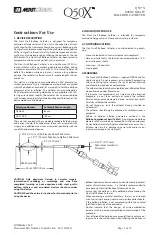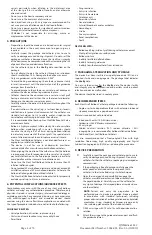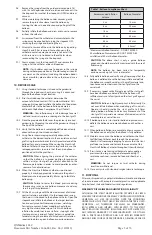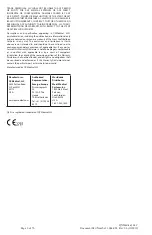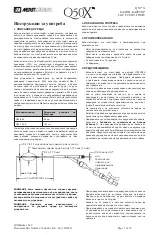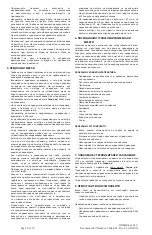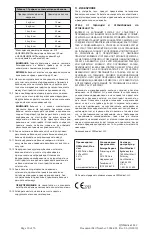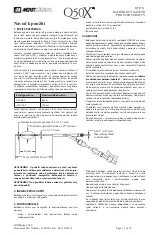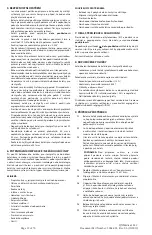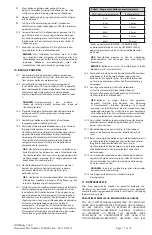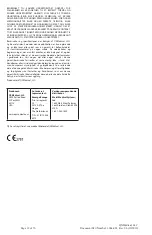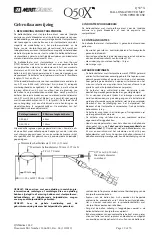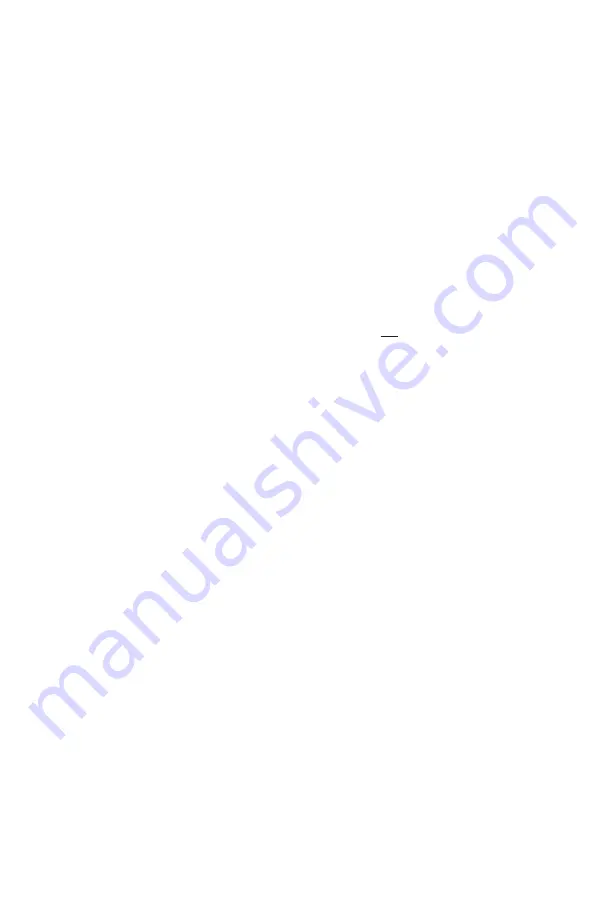
QXMédical, LLC
Page 4 of 76
Document Part Number: 3064-001, Rev. 06 (10/2019)
vessels, particularly when inflating in the distal-most area
of the stent graft, or in calcified, stenotic, and/or otherwise
diseased vessels.
• Do not use in the heart or coronary arteries.
• Do not use in the treatment of dissections.
• Hand injections using a 60 cc syringe are recommended. Do
not use a pressure inflation device for balloon inflation.
• Do not use a power injector for injection of contrast medium
through distal catheter lumen. Rupture may occur.
• QXMédical is not responsible for mis-sizing, misuse or
misplacement of the device.
5. PRECAUTIONS
• Preparations should be made and a trained vascular surgical
team available in the event conversion to open surgery is
required.
• Carefully inspect the package and catheter prior to use to
verify no damage occurred during shipment. Do not use if the
package or catheter is damaged since the sterility or integrity
of the device may be compromised and thus increasing the risk
of patient infection and device malfunction.
• Use the catheter prior to the
Use By
date specified on the
package.
• Do not attempt to pass the catheter through an introducer
sheath smaller than 10 Fr. Damage to the device may occur.
• Only use guidewires with a diameter ≤ 0.038”.
• To avoid kinking and damaging the catheter, advance slowly
in small increments until the proximal end of the guidewire
emerges from the catheter.
• To avoid damage to the catheter or vessel, do not advance or
withdraw the device without a guidewire in place.
• Catheter should not be advanced into a vessel or stent graft
having a diameter smaller than the catheter outer diameter.
Damage to the device or vessel may occur.
• Carefully monitor the patient’s blood pressure throughout the
procedure.
• If an obstruction in the vessel (e.g., a tortuous bend, stenosis,
calcification, etc.) prevents advancement of the catheter, use
standard techniques to try to dilate and/or straighten the
vessel before continuing to advance the catheter.
• It is recommended that back-up Stent Graft Balloon Catheters
are made available.
• Balloon is highly compliant. Inflate slowly. Do not over-inflate
balloon when modeling graft in vessels. Operator should
visualize the stent graft at all times during balloon inflation
to detect any movement of the stent graft. Use special care in
areas of diseased vessels to avoid rupture or vessel trauma.
• The Stent Graft Balloon Catheter is not intended for use as an
angioplasty or dilatation balloon.
• The device is not for use in endovascular prostheses
contraindicated for use with compliant balloon catheters.
• When aligning the position of the catheter so that the balloon
is in proper position for expansion within vessel or stent graft,
pay careful attention to the fluoroscope location in order to
avoid parallax or other sources of visualization error.
• Do not use the Stent Graft Balloon Catheter for more than 20
inflation/deflation cycles.
• Do not exceed 50 mm balloon diameter and do not exceed 60
cc inflation volume at 50 mm balloon diameter. Adhere to the
balloon inflation guidelines outlined in Table 1.
• The Stent Graft Balloon Catheter has been tested to temporarily
occlude vessels up to 41 mm in diameter.
6. POTENTIAL COMPLICATIONS/ADVERSE EFFECTS
Complications may occur with the use of any stent graft balloon
catheter or during any catheterization procedure. Therefore, only
physicians trained in vascular surgery, interventional radiology or
cardiology, and who have completed training or have experience
with access/support catheters and associated devices should
consider using this device. Possible complications associated with
this type of procedure include but are not limited to the following:
CLINICALLY RELATED:
• Vessel perforation, dissection, rupture or injury
• Occlusion at some locations may cause arrhythmia
• Paresthesia
• Drug reactions
• Entry site infection
• Entry site hematoma
• Cardiac events
• Respiratory failure
• General malaise
• Arterial thrombosis and/or embolism
• Hemorrhage
• Stroke
• Aneurysm rupture
• Renal complications
• Death
DEVICE RELATED:
• Balloon catching inside of graft during catheter movement
• Stent graft migration caused by device
• Balloon rupture
• Inability to inflate/deflate balloon
• Inability to insert guidewire
• Inability to withdraw catheter from introducer
7. PACKAGING, STERILIZATION AND STORAGE
The device has been sterilized using ethylene oxide (EO) and is
supplied sterile and non-pyrogenic. The package label indicates
the
Use By
date.
Do not use the device after the
Use By
date. The device sterility
and integrity may be compromised and possibly result in patient
infection and device malfunction.
The device should be stored in cool dry place.
8. RECOMMENDED ITEMS
Each Stent Graft Balloon Catheter package includes the following:
• Single-use sterile disposable catheter with extension tube and
stopcock mounted on a paperboard card.
Materials required but not provided are:
• Introducer Sheaths (10 Fr Minimum size)
• Guidewires (0.038” Maximum diameter)
• 60 cc syringes
• Diluted contrast solution (75% sodium chloride / 25%
renographin) is recommended for balloon inflation/deflation
• Additional Stent Graft Balloon Catheters
It is also recommended that a freely-angled C-Arm with high
resolution fluoroscopy, high quality angiography and Digital
Subtraction Angiography (DSA) be used during the procedure.
9. DEVICE PREPARATION
9.1
Carefully inspect the package and catheter prior to use to
verify no damage occurred during shipment. Do not use
catheter if either the catheter or packaging is damaged or
compromised.
9.2
If the packaging is free of damage, carefully open the
outer pouch and introduce the inner pouch (with
catheter) to the sterile field using sterile techniques.
9.3
Open the inner pouch and carefully disengage the
catheter, manifold and extension tube assembly from
the paperboard card. Carefully inspect the catheter for
any signs of damage. If damaged, please discard and use
another catheter.
NOTE:
Patient and entry site preparation to be
performed prior to device preparation. Prepare patient
in accordance with standard techniques; including
proper administration of anticoagulation and antiplatelet
medication. Using standard techniques prepare entry
site, including placement of the introducer sheath.
9.4
Fill 60 cc syringe with 10 cc to 15 cc of heparinized saline
solution.
9.5
Attach the syringe to the guidewire lumen port and flush
the guidewire lumen.



